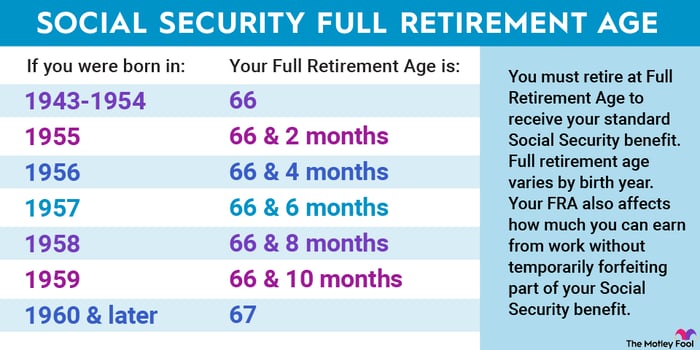Key Points
Even with its faults, it would be hard to argue against how beneficial the Social Security program is for millions of Americans. After decades of paying into the Social Security system (for most people at least), it’s a well-earned financial uplift that Americans can look forward to in their golden years.
Considering how important Social Security is to retirees and their finances, it makes sense that many would aim to receive the highest benefit possible, which is $5,108 in 2025. Qualifying for the maximum benefit isn’t an easy task, but there are ways to make it happen. Let’s take a look at the two-step process it takes to qualify.
Where to invest $1,000 right now? Our analyst team just revealed what they believe are the 10 best stocks to buy right now. Learn More »
Image source: Getty Images.
Your lifetime earnings play a huge role in determining if you qualify
Your earnings determine much of your Social Security benefits because they determine how much you pay into the Social Security system via Social Security payroll taxes. At the current rates, most Americans pay a tax rate of 6.2%, with their employers also paying 6.2% on their behalf, bringing the total to 12.4% (self-employed individuals pay the full amount).
The good news is that not all income is subject to Social Security payroll taxes, only up to a certain amount, called the wage base limit. To qualify for the maximum Social Security benefit, you would need to earn at least the wage base limit in each of the 35 years that Social Security uses to calculate your monthly benefit.
In 2025, the wage base limit is $176,100, so if that’s one of the years that will be used in calculating your benefit, you would need to earn at least that amount. Similar to the cost-of-living adjustment (COLA), the wage base limit increases in most years, so it’s important to know what the relevant year’s limit is to see where your income compares to it. Below are the past 10 wage base limits before 2025:
- 2024: $168,600
- 2023: $160,200
- 2022: $147,000
- 2021: $142,800
- 2020: $137,700
- 2019: $132,900
- 2018: $128,400
- 2017: $127,200
- 2016: $118,500
- 2015: $118,500
When you claim benefits affects how much you receive monthly
The earnings portion of the two-step process is the hardest to achieve because most people can’t simply choose to increase their income each year to meet the wage base limit. The easier part deals with when you claim benefits because even if you meet the earnings requirement, claiming benefits at your full retirement age (FRA) would only get you a maximum benefit of $4,018.

Image source: The Motley Fool.
Your FRA is when you’re eligible to receive your primary insurance amount, which is considered your baseline benefit. By delaying benefits past your FRA, your monthly benefit is increased by 2/3 of 1% monthly, or 8% annually. This increase happens until you reach age 70.
To be eligible for the maximum $5,108 benefit, you would need to meet the earnings criteria and delay claiming benefits until you turn 70. Doing one without the other would automatically disqualify you from earning the maximum benefit.
What is the likelihood of receiving the maximum benefit?
Unfortunately, most people won’t be eligible for the maximum benefit, mainly due to the earnings requirement.
According to the Social Security Administration (SSA), only around 6% of covered workers earn at least the wage base limit each year, and only around 20% of current and future covered workers are projected to earn above the wage base limit in at least one year throughout their career. Now, imagine how difficult it would be to sustain that for 35 years.
To see where you stand, you can check your account on the SSA website. It has an earnings report that will show you your projected benefit based on your current earnings history and at different claiming ages.
The $23,760 Social Security bonus most retirees completely overlook
If you’re like most Americans, you’re a few years (or more) behind on your retirement savings. But a handful of little-known “Social Security secrets” could help ensure a boost in your retirement income.
One easy trick could pay you as much as $23,760 more… each year! Once you learn how to maximize your Social Security benefits, we think you could retire confidently with the peace of mind we’re all after. Join Stock Advisor to learn more about these strategies.
View the “Social Security secrets” »
The Motley Fool has a disclosure policy.
The views and opinions expressed herein are the views and opinions of the author and do not necessarily reflect those of Nasdaq, Inc.
#Qualify #Social #Securitys #Biggest #Paycheck